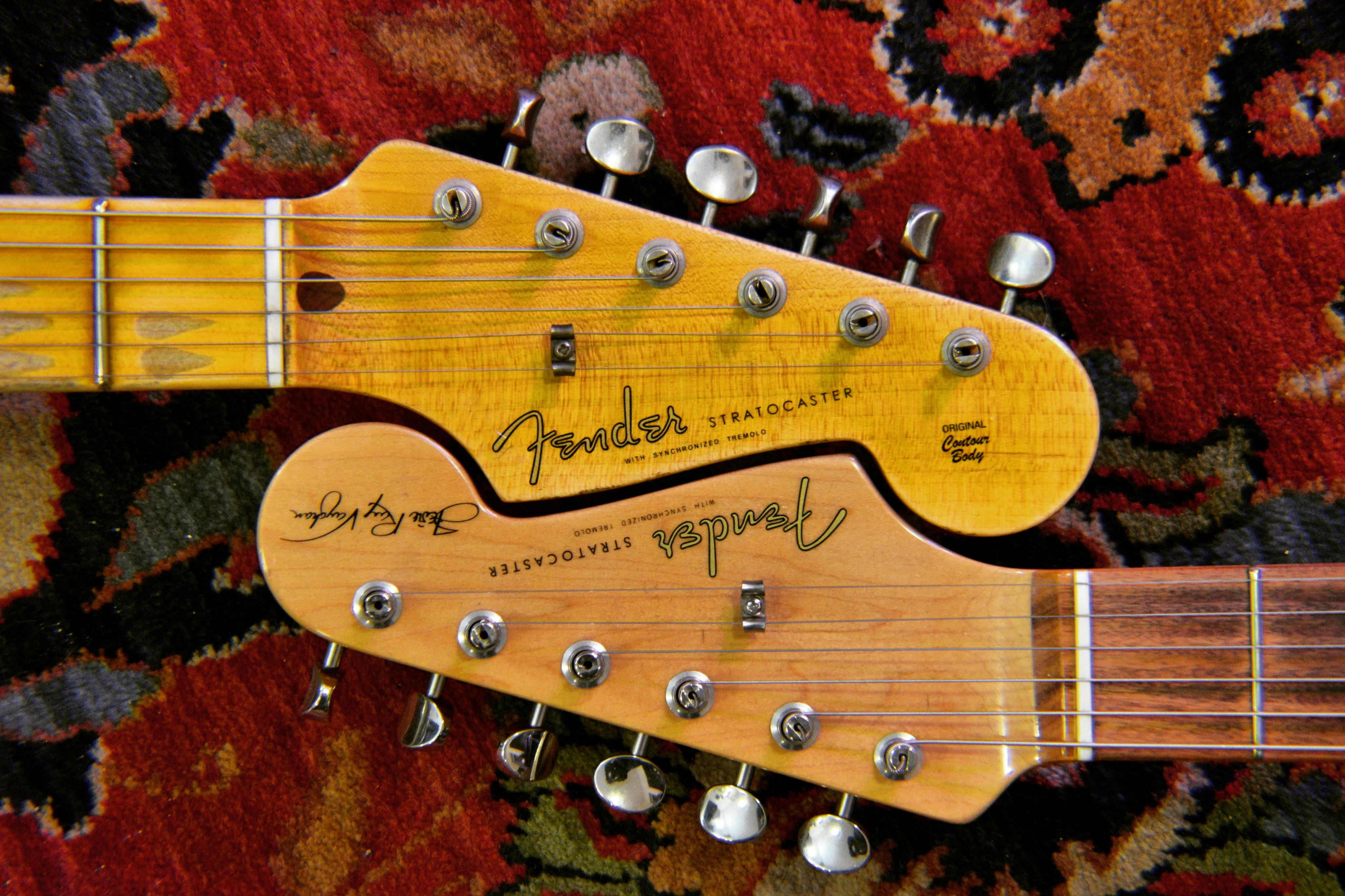Stratocaster Humbucker Conversion with Coil‑Split and Treble‑Bleed Mod (2025 DIY Guide)
Master Stratocaster humbucker conversion, coil split, and treble bleed mods. Get step-by-step wiring tips and unlock pro-level tone versatility today!

Ever wanted to turn a Stratocaster into a true tone chameleon? Adding humbucker power, coil-split flexibility, and sparkling highs at any volume hasn’t just crossed the minds of countless Strat players—it’s become a must-mod for anyone chasing pro-level versatility. Most guitarists love the Strat’s signature feel and clarity, but sometimes a little extra punch and warmth are needed. Here’s the thing: wiring up a humbucker with coil-split and treble-bleed mods unlocks all of that in one fell swoop. But only if you do it right.
This guide breaks down every step, from choosing the right pickups and pots to wiring up both coil-split and treble-bleed circuits—using real-world diagrams and part values used by techs and trusted brands. Ready to turn a classic into a modern monster?
What You'll Learn:
- Learn how to install a humbucker in your Strat without unnecessary routing.
- Step-by-step instructions for coil-split wiring and continuous Spin-a-Split blending.
- Detailed guide for treble-bleed mod component values and installation.
- Essential tools, parts, and wiring diagrams included.
- Common pitfalls and troubleshooting tips from trusted sources.
- Unlock humbucker punch, single-coil clarity, and sparkly highs in one build.
What You Need for a Stratocaster Humbucker Conversion with Coil-Split and Treble-Bleed
The right prep makes everything easier. Here’s the go-to list for a Stratocaster humbucker conversion with coil-split and treble-bleed mods.
Essential Parts and Tools
- Humbucker pickup (bridge position is most common; must have 4-conductor wire for coil‑split and spin‑a‑split)
- Stratocaster pickguard (HSS or HSH, depending on your setup; pickguard with pre-cut humbucker space if you’re avoiding routing)
- 500k or 250k audio taper pots (preferably push-pull, mini-toggle, or no-load for split/blend functions)
- Capacitors (treble-bleed: common values 560pF, 680pF, 1.2nF)
- Resistors (treble-bleed: 150kΩ, 300kΩ, optional 20kΩ series)
- Switches (push-pull pot or mini-toggle for coil-split/on-off; blend pot for spin-a-split mod)
- 22AWG stranded wire (multi-color for easy tracing)
- Soldering iron (25W-40W recommended), solder (rosin core), wire strippers, small screwdrivers
- Heat shrink tubing or electrical tape
Choosing Your Humbucker and Electronics
Most humbuckers designed for Strats use standard spacing and fit easily into HSS or HSH pickguards—full-size models like the Seymour Duncan JB Jr, DiMarzio Super Distortion S, or Fender Shawbucker are solid choices. The trick is making sure your humbucker has 4-conductor wiring, which is needed for coil-split or spin-a-split mods. This gives direct control over each coil. Avoid older 2-lead models, which won’t work for split designs. And for controls—higher-value pots (500k) make humbuckers sound brighter, while 250k tames treble. No-load pots act as a true bypass in full-on mode and work wonders with spin-a-split designs.
Treble-Bleed Mod: Components and Values
Treble-bleed mods preserve high-end clarity as you roll down the volume knob—a common complaint with humbucker swaps in Strats. Fender engineer Jonathan Parrish and Bruce Gombrelli both suggest combining capacitors (typically 560pF to 1.2nF) with parallel or series resistors (150kΩ to 300kΩ, plus a possible 20kΩ in series) for the most natural roll-off, helping keep that single-coil sparkle alive. Exact values come down to pickup choice, cable length, and taste. Fender favors a 1.2nF/150kΩ parallel and 20kΩ series combo, while DiMarzio recommends 560pF/300kΩ parallel—both widely used by builders. Planning these details on your wiring diagram upfront saves headaches later on.
Step-by-Step Stratocaster Humbucker Conversion and Installation
This is where the magic happens. Swapping in a humbucker, prepping the guitar, and wiring everything for split and treble-bleed—all laid out. Take it slow and double-check connections. Small errors multiply down the line.
Preparing Your Stratocaster
- Remove strings to reduce risk of scratching the body or neck.
- Take off the old pickguard. Keep track of screw locations.
- Carefully desolder the stock pickup wires, grounding, and connections from pots and switch. Snap photos for reference if needed.
- Inspect the body cavity: many modern Strats have an HSS or universal route, fitting a standard-size humbucker without extra routing.
- If the cavity is SSS-only, use a pre-cut HSS or HSH pickguard—no-Routing options exist for loaded-pickguard swaps (just drop in and wire up).
Installing the Humbucker
Mount the humbucker in the pickguard before reattaching it to the body. Use foam or springs to adjust height to taste. Feed the 4-conductor wiring through the cavity, making sure there’s no pinching. Attach ground wires to the tremolo claw or bridge as needed. All wiring should be clean—no stray copper, no cold solder. Good soldering affects tone and reliability.
Wiring the Humbucker and Controls
Start by following the color codes for your humbucker—Seymour Duncan, DiMarzio, and Fender all differ. Connect the red and white wires (typically the coil junctions) to your split/blend switch—push-pull, mini-toggle, or blend pot depending on the design. Black (hot) goes to the switch or volume, and green/bare to ground. For coil-split: the split switch grounds one coil while leaving the other active. For spin-a-split: connect the coil-junction lugs to the blender pot, grounding as you sweep for gradual transition. See trusted wiring diagrams for reference. Integrate the treble-bleed mod on your volume pot (center lug input, outer lug output—component orientation depends on parallel or series design). Don’t forget to check every connection, wiggle wires, and confirm continuity before replacing strings.
How to Wire Coil-Split and Spin-a-Split Mods for Stratocaster Humbucker
Coil-splitting brings versatility to humbuckers, mimicking single-coil snap at the flick of a switch. The Spin-a-Split mod takes it further, letting you blend between full humbucker and pure single-coil using a pot for gradual tonal change. Both start with a 4-conductor humbucker—it’s non-negotiable.
Standard Coil-Split Wiring
For classic coil-split, a push-pull pot or mini-toggle switch routes one coil’s wires (red/white on many pickups) to ground when activated. This leaves the other coil live, turning the pickup into a beefy single-coil. The process is:
- Connect the red and white wires from the humbucker together and run to the split switch.
- When switch is engaged, these wires are grounded, silencing one coil.
- Black wire (hot) goes to selector switch or volume, with green/bare to ground.
Want series/parallel partial splits? Adding a resistor (usually 470Ω–1.2kΩ) before ground lets you "partially" split, balancing output. Diagrams and examples are available in Fralin Pickups’ coil split round-up.
Spin-a-Split Mod Explained
Premier Guitar’s Dirk Wacker details the Spin-a-Split mod, which uses a pot instead of a switch to let you blend continuously between humbucker and single-coil sound. Here’s how:
- Use a 250k or 500k no-load pot for blending (no-load is silent at full humbucker position).
- Connect coil tap wires (red/white) to center lug on blend pot; one outer lug to ground.
- Sweeping the pot grounds more or less of one coil, creating a blend from fat humbucker to snappy single-coil—with everything between.
No-load pots are key. Standard pots bleed to ground even "all the way up," dulling tone. With a no-load, full humbucker mode is untouched.
Pot Selection and Tone Considerations
Choosing pot value shapes results:
- 500k pots = brighter, more open humbucker tones.
- 250k pots = smoother, warmer sound; popular for taming harsh pickups.
- No-load pots = true bypass at max setting, perfect for Spin-a-Split.
- Push-pull or mini-toggles = great for on/off coil split (standard mod).
Get the split working, then tweak values and types to taste. Try both push-pull and blender pot mods and see what fits your style. Reference the Premier Guitar Spin-a-Split guide for step-by-step wiring and the best tips to blend smoothly—pot selection makes or breaks the mod.
Adding a Treble-Bleed Mod to Your Stratocaster Humbucker Conversion
Most guitarists notice that rolling back the volume on a humbucker-loaded Strat makes things get muddy—losing that articulate high end. Treble-bleed mods fix this by letting high frequencies bypass the volume pot as you turn it down. Done right, you’ll keep definition at any level.
How a Treble-Bleed Circuit Works
It’s a simple trick: adding a small capacitor (and often a resistor) between the input and output lugs on your volume pot. This creates a frequency ‘bypass’ so treble doesn’t disappear when you turn down—great for both coil-split and standard humbucker wiring. According to Fender, using series and parallel resistor/cap combos produces the smoothest, most "musical" taper.
Choosing Component Values
- Capacitor only: extra-bright, often too harsh for humbuckers
- Cap + parallel resistor: most popular; Fender uses 1.2nF cap + 150kΩ resistor in parallel for balanced taper
- Cap + series resistor: less common but smooth; try 1.2nF cap + 20kΩ in series
- DiMarzio recommends: 560pF cap + 300kΩ resistor (parallel) for humbucker tone, per Gombrelli’s treble-bleed guide
Long cables and dark pickups may need a different value—Bruce Gombrelli and others offer charts matching cable length, pickup output, and treble-bleed component for best performance.
Wiring and Installation
- Locate your Strat’s volume pot (usually the first pot from your output jack).
- Solder the cap and resistor (parallel or series configuration) between input and output legs on the pot.
- Insulate with heat shrink or careful spacing—don’t short to ground.
- Test with your amp: roll down volume and confirm treble is retained instead of lost.
Getting picky about pot values? Higher total resistance (pot plus resistor) keeps tone crisp. A/B different resistor/cap combos and cable lengths to personalize your sound. Several full diagrams and tuner-tested charts are available in Stratocaster Design’s treble-bleed breakdown.
Troubleshooting and Optimizing Your Stratocaster Humbucker, Coil-Split, and Treble-Bleed Mods
Even careful jobs hit snags. Hum, weak output, missing split, or tone loss—these show up often. The good news? Most fixes are simple if you know where to look.
Common Issues and Fixes
- No output or weak output: Check for cold solder joints. Especially at ground connections. Reflow solder if needed.
- Excessive hum or buzz: Double-check shielding and ensure pickup and pot grounds go to a common point—usually the tremolo claw. Shielding paint or foil inside the body helps too.
- Coil-split not working: Review wiring diagram and color codes—most errors happen where split wires aren’t properly connected or grounded.
- Tone muddy when volume down: Try swapping treble-bleed values. If there’s not enough treble, increase the cap or decrease the resistor.
Testing and Fine-Tuning
- Test each pickup position and switch setting. Listen for expected output, hum, and clarity.
- Roll down the volume and check if treble remains; if not, swap cap/resistor in treble-bleed.
- If the coil-split or spin-a-split isn’t working smoothly, check that the correct pot is present (no-load preferred for Spin-a-Split).
- Still stuck? Photos of wiring can help community techs spot issues fast. Sometimes a second set of eyes (or a pro tech) makes all the difference.
Fine-tune the build with small adjustments—swapping a resistor, trying a different cable, adding extra shielding—until everything sounds and feels right. Builders like Bruce Gombrelli swear by experimenting with values based on the exact rig, even going so far as to keep a "treble-bleed tweak kit" on hand for testing.
Conclusion
Putting it all together—humbucker conversion, coil-split, spin‑a‑split, and a well-chosen treble-bleed—elevates any Strat from classic workhorse to a true player’s swiss army knife. Those mods not only offer more sounds, but let a Strat keep its signature feel while breaking all the usual boundaries. The trick is planning your parts, double-checking each step, and embracing a little trial and error as you tweak values for your rig. With this guide and the wiring wisdom shared by top techs and builders, turning inspiration into reality has never been more within reach. Give it a shot, and don’t be shy about sharing results or asking the community for tips—the best tones often come from the boldest modders.
Frequently Asked Questions
How do you coil-split a humbucker on a Strat?
What is a treble-bleed mod and how do you install it?
Can you install a humbucker in a Strat without routing?
What are the best component values for a Stratocaster treble-bleed mod?
What does the Spin-a-Split mod add to a Strat humbucker setup?
Key Takeaways
- 4-conductor humbuckers, when paired with coil-split/spin-a-split and treble-bleed mods, unlock immense tonal range in a Stratocaster.
- No-load and push-pull pots enable advanced switching and blending options for real-time tone control.
- Treble-bleed mods preserve clarity and sparkle, making volume controls usable at any setting.
- Experimenting with component values and layout is the fastest path to a personalized, pro-level Strat.
Related Topics
Explore more articles in these topics to deepen your knowledge.
Related Articles

2025 Step‑By‑Step Guide to Installing a Humbucker in a Stratocaster
Master how to install humbucker in stratocaster safely. Avoid wiring mistakes—get expert tips, diagrams, and troubleshooting help. Start your upgrade now!

DIY Stratocaster Pickup Swap with Elevator Plate Mod for Extra Twang
Learn Stratocaster pickup swap with elevator plate with expert guitar instruction and practical techniques.

Complete DIY Guide to Electric Guitar Fret Leveling, Crowning & Polishing (2025)
Discover how to master DIY guitar fret leveling crowning polishing with expert tools and clear steps. Upgrade your guitar today!
Discover more insights from our blog to enhance your musical journey.
